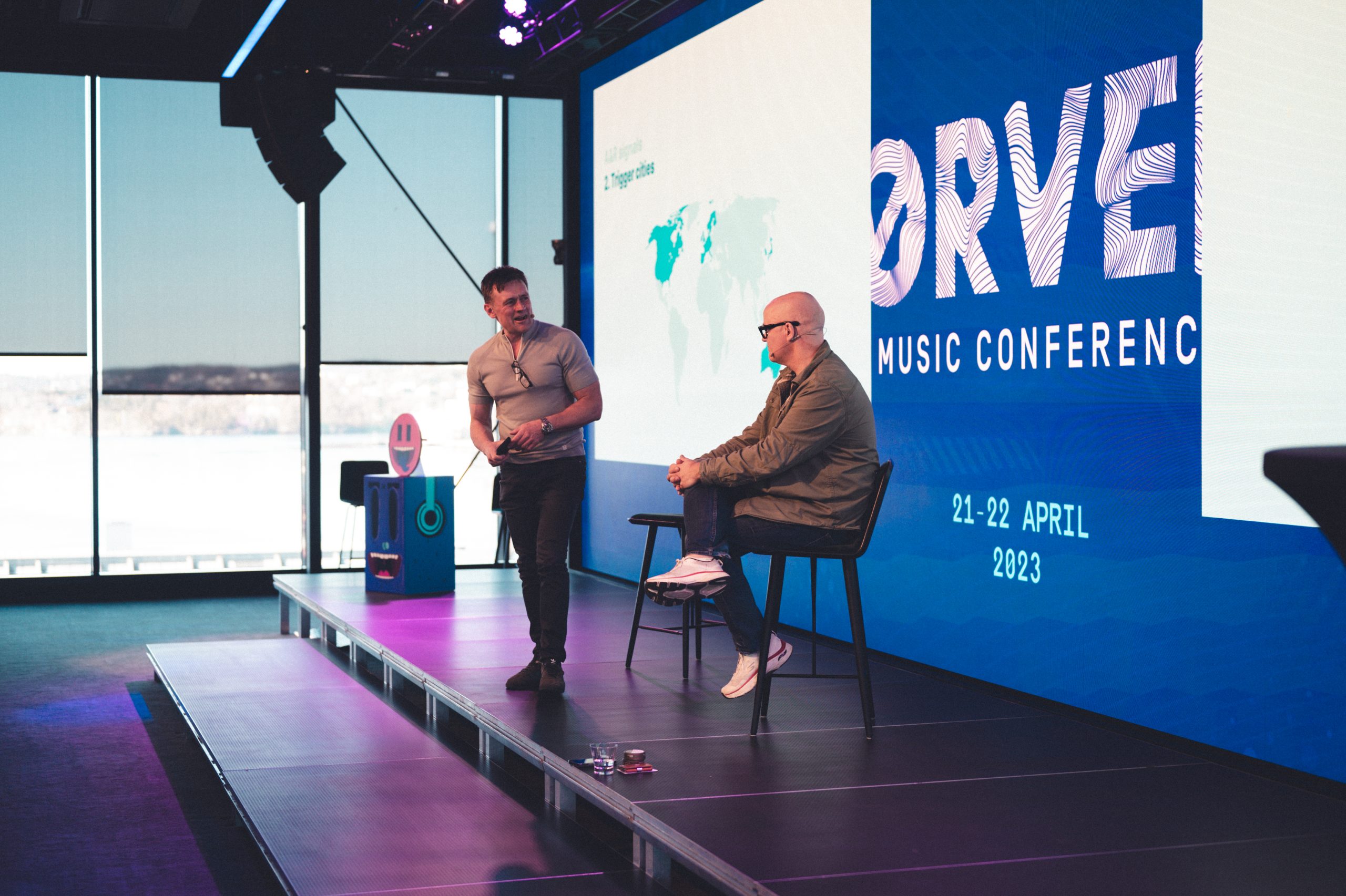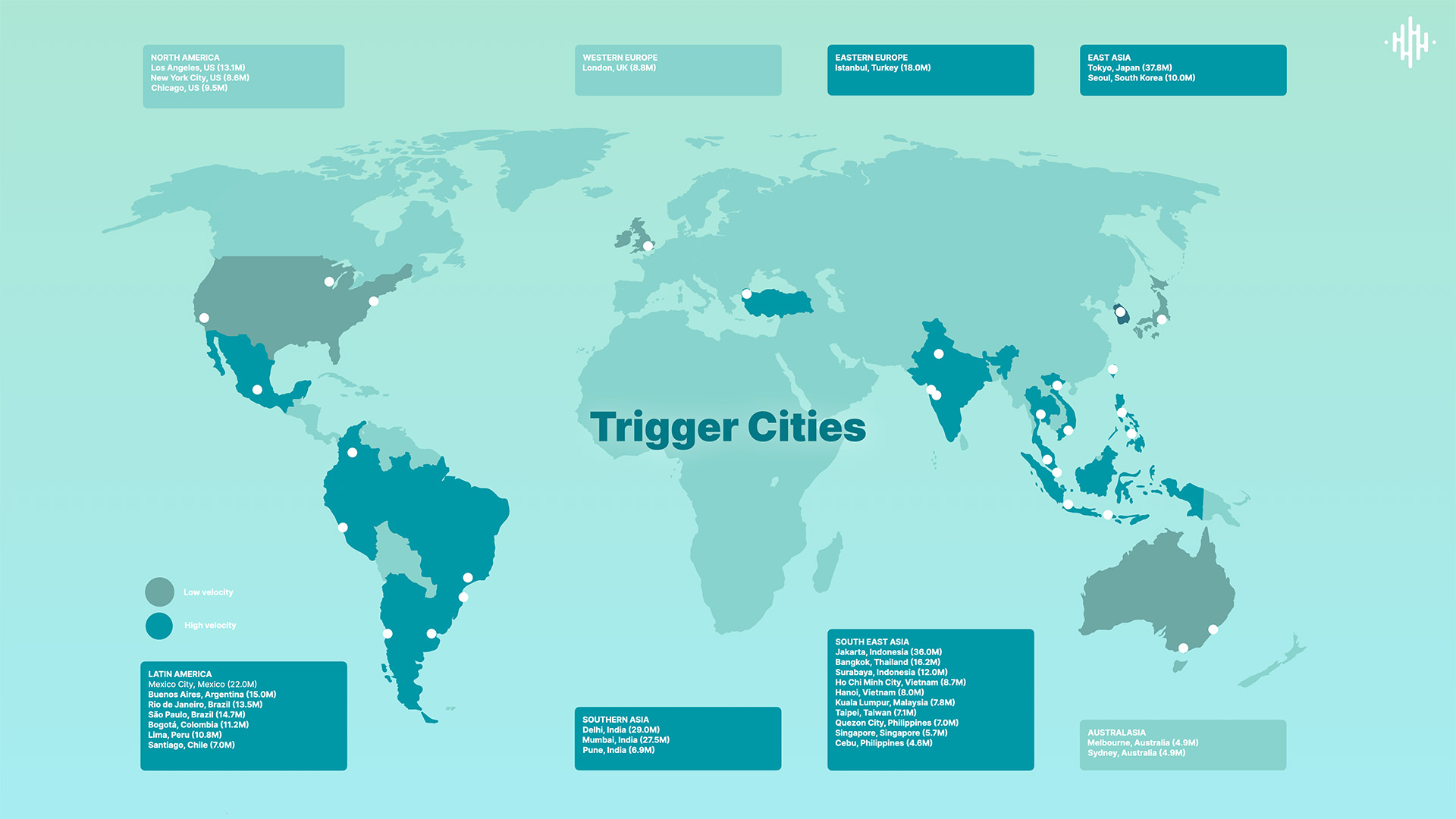
– Artists who engage audiences in the Southern Hemisphere grow faster
Chaz Jenkins of music analytics platform Chartmetric on how tapping into global ‘hot cities’ – and how sharing music as a sign of friendship – benefits international musicians.
There’s not a simple answer to the question of what a ‘hot spot’ or a ‘hot city’ is as it depends on whether you’re considering the number of people listening to music in a city, or the amount of revenue being generated for the music industry by listeners in a city.
Music is being streamed by consumers globally with some regional variations. For instance, lower consumption in parts of the world with limited internet connectivity or extreme poverty, such as parts of Southern Asia and Africa.
Therefore, if you are considering the overall number of people streaming music in a city, the overall population is a good guide.
Despite Japan’s reputation in the music industry for being behind the curve on the adoption of streaming, Tokyo is probably number 1, likely followed – in no particular order – by Mexico City, São Paulo, New York, Buenos Aires and Istanbul and a succession of other Latin American and Southeast Asian megacities.

The position of Chinese and Indian cities within this list is harder to predict, although it’s likely that cities such as Shanghai, Beijing and Chongqing are near the top, whereas Delhi and Mumbai may under-metric. But if considering revenue, then the largest US, European and Australian cities rank much higher as consumers in these locations are more likely to subscribe and at higher prices, generating higher average revenue per user (ARPU).
Sharing music as a sign of friendship
Just as the world streams music, the world is also on social networks. And despite a few regional variations we all typically use the same social networks. However, there are subtle variations in how people use socials around the world.
Typically, in Latin America, Southeast Asia and some other parts of Asia, consumers are more likely to share and (crucially) re-share posts on socials. Cultural consumers in these parts of the world use socials in a more «social» fashion – they will share their friends posts as a sign of friendship.
In the northern hemisphere, we are often slightly more reluctant to re-share content – we’re not quite so social! This is a very important trend, especially when you consider that many of the largest cities are in the southern hemisphere, and consumers in these parts of world are slightly more likely to equate music services as social networks, rather than thinking of them as the modern replacement for record stores.
Language is rarely a limitation
Therefore, international artists could benefit from a marketing push in those areas. Artists that gain audiences in these countries typically grow faster and, crucially, they grow faster in other locations. We are all interconnected on socials without borders, so an engaged audience in a very social population center will influence other population centers.
The language of lyrics is rarely a limitation, although it’s worth noting that certain genres are not quite so popular in Latin America and Southeast Asia. And crucially, music with explicit lyrics fares far less well in deeply religious Southeast Asian markets.

The sharing culture is somewhat similar in Latin America and Southeast Asia, although whereas consumers in Southeast Asia share social networks predominantly with their peers, in Latin America people are more likely to also have family in their social networks.
In terms of genres pop music is particularly popular in Southeast Asia, and dance music and rock/alternative fares better in Latin America. But these are often fairly subtle variations.
Avoid single markets
It is important to avoid being trapped in one market. Once algorithms see that you only have an audience in one country or region, it becomes progressively harder to engage audiences elsewhere. As audiences in the Southern hemisphere are social, artists who engage audiences there grow faster but crucially grow outwards (in other places) far more readily.


